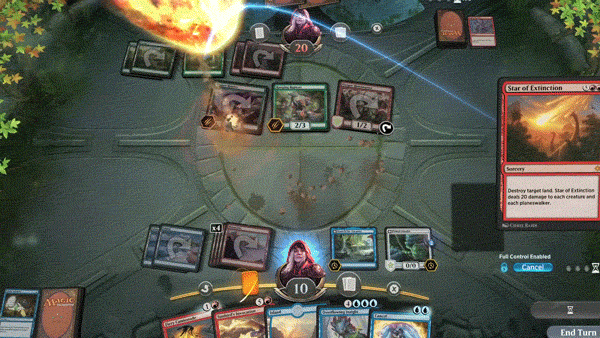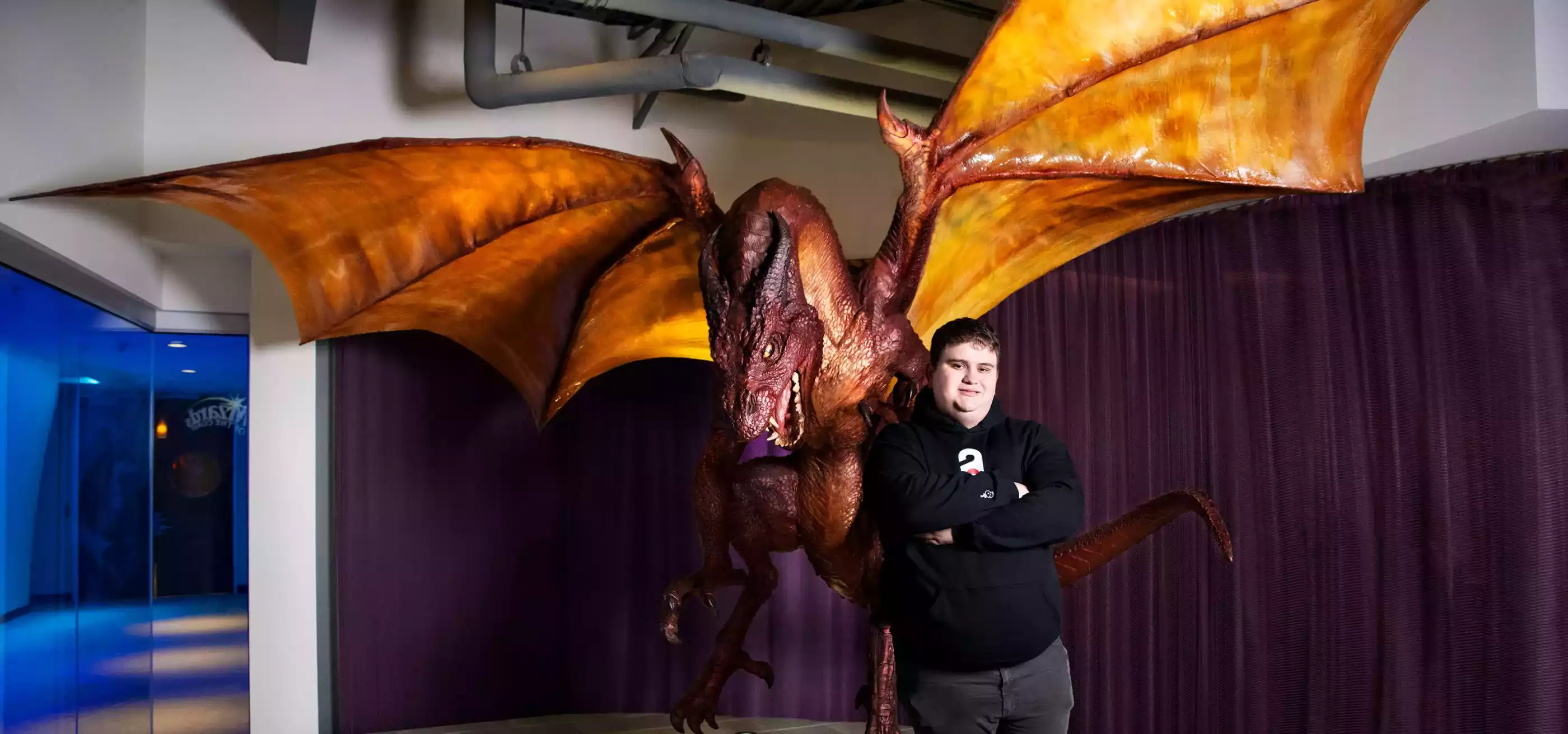For the uninitiated viewer, when two people sit down to play a game of Magic: The Gathering, it may look like they’re just moving cards around in strange configurations. But in the context of the game, those two players are actually powerful wizards, known as “planeswalkers,” dueling to the death with summoned creatures, arcane spells, and artifacts. Kaan Palaz, a 2018 DigiPen graduate and software developer at Wizards of the Coast, has spent the past two years helping make all that sub-textual sorcery visible through Magic: The Gathering Arena, the new digital, online version of the massively popular card game. But Palaz’s journey into the world of Magic: The Gathering actually started back in high school with a different massively popular game that begins with the letter “M.”
“It all began when I joined a Minecraft server,” Palaz laughs. “I got involved developing for it and running a community for it. Then I met a DigiPen student on there who was just starting their program. They started talking to me about it, and as I learned more, I realized DigiPen was exactly the school I’d been looking for.”
In light of his dual interests in music and computer science, Palaz decided to enroll in the BS in Computer Science and Digital Audio program, where he quickly found himself developing custom audio engines for his early game team projects. One day during the fall of his junior year, as work was just beginning on his final game team project, Cures and Curios, representatives from Wizards of the Coast visited campus for a Company Day presentation. “They were accepting resumes, and I was talking with one of the managers, asking, ‘What kind of audio systems are you using?’” Palaz says. “It seemed like I was asking questions they didn’t fully know the answer to, and they realized that I might be of use. So, they gave me their card.”

Palaz decided to follow up, and the rest was soon history. That business card — printed, of course, on a Magic: The Gathering card — would eventually lead him to an internship, which led to a contract job, which led to a full-time software developer position after graduation.
Rather than giving specific titles to people working on Magic: The Gathering Arena, Wizards of the Coast employees are instead assigned to work on different areas of the project. Palaz, at first, was an exception to that rule. “I was the main audio programmer,” Palaz says. “I had the opportunity with audio to work on everything basically, so I became more of a generalist in that regard.”
For the past year, however, Palaz finally landed himself in one specific area of the project — the team in charge of the player-facing presentation of the cards. In other words, Palaz says, his current team is responsible for animating and displaying all the complex magical attacks, summons, and spells that are only implied in the physical version of the game and making sure it all makes sense for the player. “For us, the game is already made,” Palaz says. “There are already sets of cards, expectations of how they all work, and the art is already printed on paper. Anything we do on top of that for the digital version is something extra that we have to figure out as a part of this process. If we have a major problem, we can’t change that card, we have to make it work. So that’s been something that’s super fun, because it makes puzzles out of representing these things.”

Given that Magic: The Gathering was recently determined by university researchers to be “the world’s most complex game,” Palaz’s team has to solve quite a few puzzles indeed. That’s because the rules written on individual Magic cards don’t exist in a vacuum — they work in concert with all the other rulesets at play in the field and can interact in sophisticatedly complex ways. “For instance, we have a team of people working just specifically on the motion of cards and things, but there’s tons of extra information that might be needed so we can make this card fly across the screen when something else happens — and then have all of that information displayed in a way that makes sense. Sometimes it requires a lot of additional context for the player to figure out what that means,” Palaz says. “How do we get that data across to the player? What does that look like? How would the player consume that? How does this action correlate to that? It’s very much a cross-disciplinary effort.”
Even though cracking those puzzles can prove difficult at times, Palaz says DigiPen taught him, above all else, how to push through a roadblock. “When you get stuck and hit a wall, and you can’t find the right documentation or anyone who has run into the issue you have before, it’s very easy to stop, change course, and backtrack to the point where you realize you’re doing something totally different from what you set out to,” Palaz says. “What DigiPen taught me is to be headstrong and break something enough times that I understand it completely and make it work.”
That headstrong attitude and make-it-work commitment seems to be paying off. Even though the final version of Magic: The Gathering Arena hasn’t officially released yet — it’s currently still in open beta — Wizards of the Coast announced in early June that 1 billion individual games had already been played on the platform. “It really puts things in perspective,” Palaz says. “Coming here and seeing all the passion from the people who play it and the people who make it, it’s awesome.”
